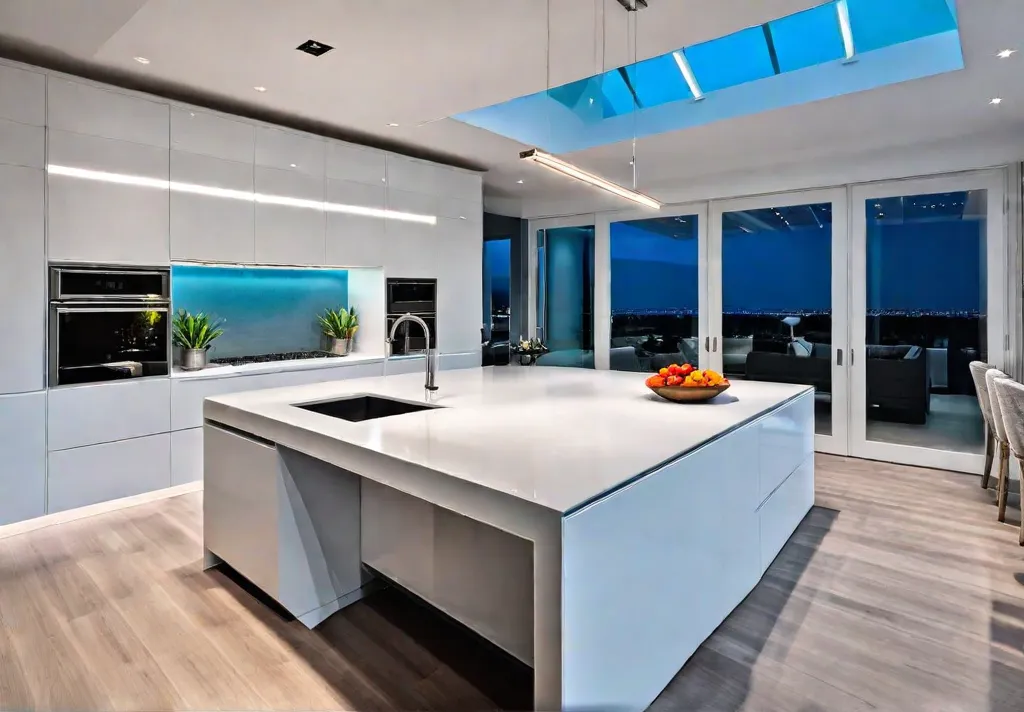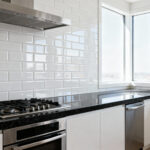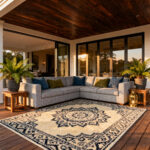Picture this: You’re standing in the heart of your kitchen, whipping up a delicious meal for your family. The countertops are gleaming, the cabinets are neatly organized, and the aroma of simmering spices fills the air. However, lighting is one key element that can truly make or break the ambiance of this culinary haven.
Lighting plays a crucial role in setting the mood and functionality of any kitchen. It’s not just about illuminating the space – it’s about creating a visually captivating and practically efficient environment that inspires your inner chef. I’m thrilled to share eight illuminating kitchen lighting ideas that transform your cooking space into a culinary oasis.
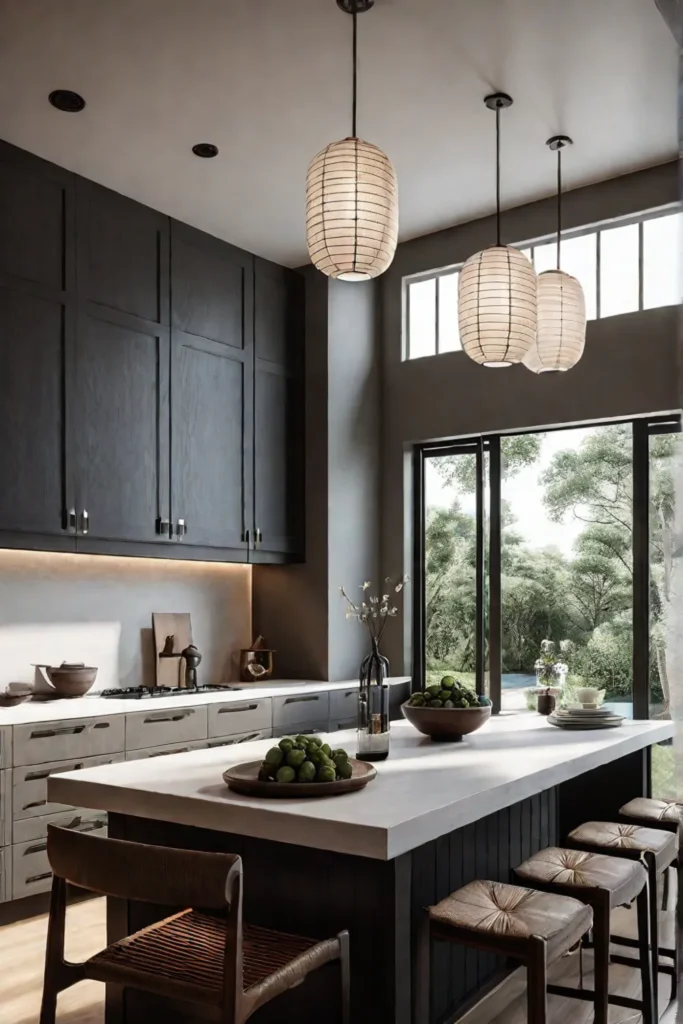
As a home decorator and design blogger, I’ve seen firsthand how lighting can elevate a kitchen from drab to dazzling. Whether planning a full-scale renovation or simply refreshing your current setup, these ideas will help you find the perfect balance of form and function.
Pendant Lights
Let’s start with a classic – pendant lights. These hanging fixtures are a versatile and stylish choice for kitchens, offering both style and function. Pendant lights can be used to create focal points, provide task lighting over work surfaces, and even contribute to the overall ambient illumination of the space.
One of the great things about pendant lights is the wide range of styles available. From modern and minimalist to rustic and industrial, a pendant light suits any kitchen aesthetic. Consider grouping multiple pendant lights over a kitchen island or dining table to create a visually striking and functional lighting arrangement.
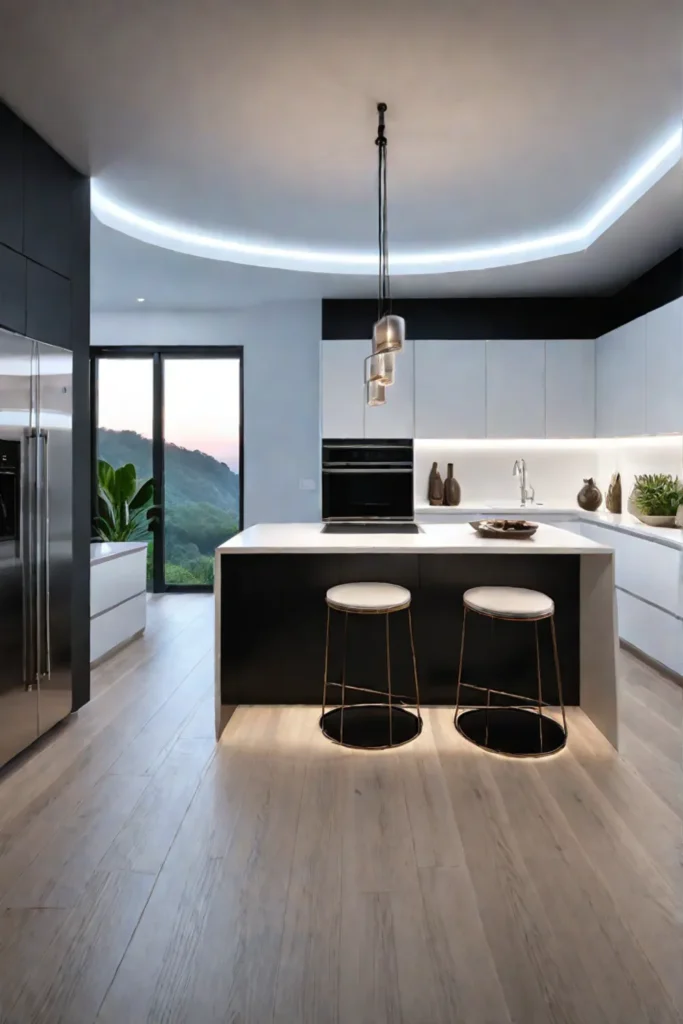
When it comes to positioning your pendant lights, the ideal hanging height is typically 30-36 inches above the countertop. This ensures adequate illumination without casting distracting shadows. Remember to pay attention to the placement, making sure the lights are positioned to provide the best coverage without obstructing your line of sight.
Recessed Lighting
Recessed lighting is a fantastic option for a clean, minimalist look. These flush-mounted fixtures can be strategically placed to illuminate work surfaces, creating a warm, inviting glow throughout the kitchen. Recessed lights are also great for highlighting specific areas, such as art pieces or architectural details, adding depth and visual interest to the space.
One of the benefits of recessed lighting is its energy efficiency, thanks to advancements in LED technology. These lights are long-lasting and customizable and can also help you save on your electricity bills. When selecting the color temperature and brightness levels for your recessed lights, consider the overall mood and aesthetic you’re trying to achieve in your kitchen.
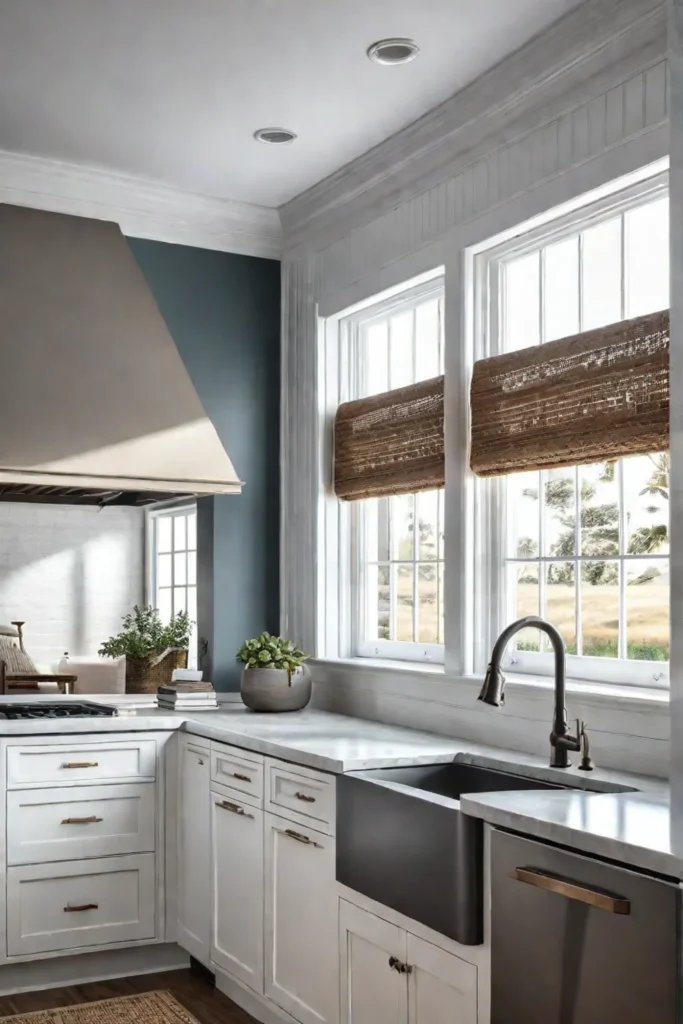
Pair your recessed lights with other sources, such as pendant lights or under-cabinet lighting, to create a layered and balanced lighting scheme. This combination will provide task-oriented illumination and ambient, mood-setting light, making your kitchen functional and visually appealing.
Under-Cabinet Lighting
Under-cabinet lighting is an essential component of any well-designed kitchen lighting plan. By illuminating your work surfaces, this task lighting makes it easier to prep, chop, and clean up, ensuring safety and efficiency in the kitchen.
But under-cabinet lighting isn’t just about function – it can also enhance the overall aesthetic of your kitchen. LED strip lights, for example, can create a warm, inviting glow that highlights the beauty of your cabinetry and countertops. With smart home integration, you can even control your under-cabinet lights’ brightness and color temperature with a button or a voice command.
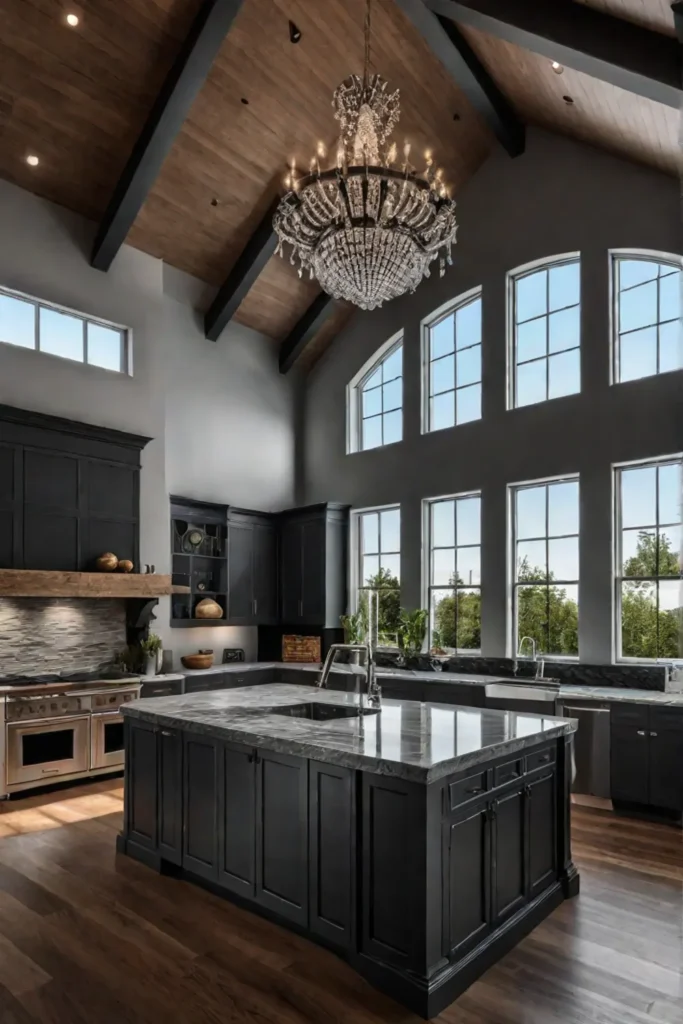
When it comes to under-cabinet lighting, consider using a combination of task-oriented fixtures and decorative strip lighting. This layered approach will provide the necessary illumination for your cooking tasks and add a visually striking element to your kitchen design.
Task Lighting
Proper task lighting is crucial for any well-designed kitchen. You can ensure optimal visibility and safety while cooking and prepping meals by strategically placing lights over work areas like countertops, islands, and sinks.
Task lighting can come in many forms, from pendant lights and recessed fixtures to specialized task lamps. Adjustable task lighting, such as swing-arm lamps or directional spotlights, can be particularly useful, allowing you to direct the light exactly where you need it.
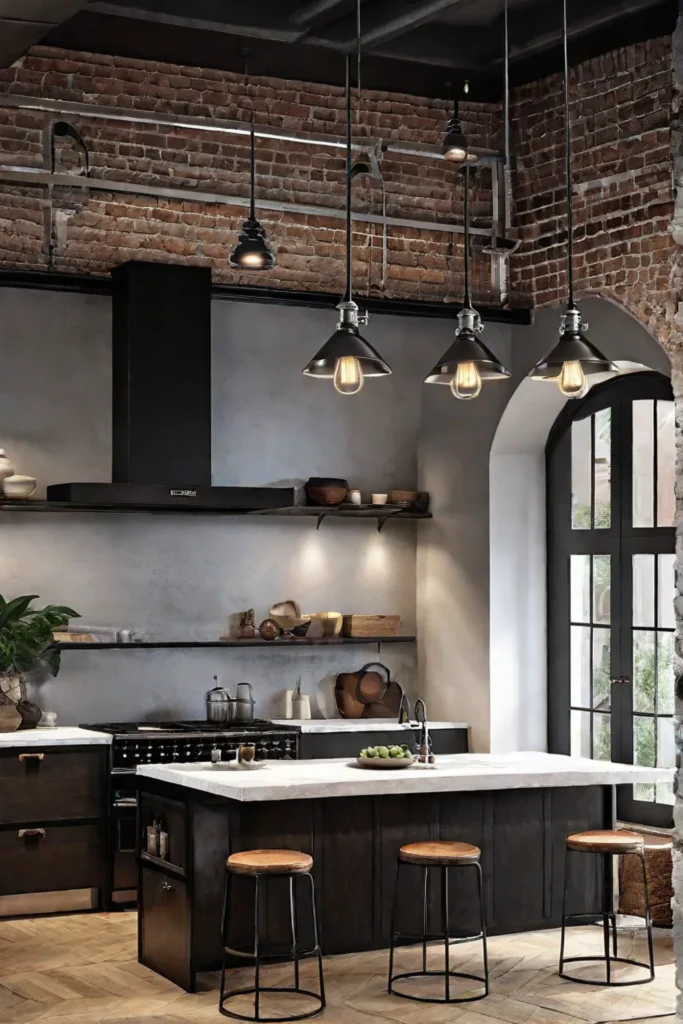
When planning your task lighting, consider how you use your kitchen and where you need the most illumination. Consider using a combination of task lighting and ambient lighting to create a balanced and functional scheme that meets your practical and aesthetic needs.
Ambient Lighting
While task lighting is essential for specific work areas, ambient lighting is the foundation of a well-lit kitchen. This type of lighting creates a warm, inviting atmosphere throughout the space, setting the overall mood and ambiance.
Ambient lighting can be achieved through recessed lights, wall sconces, or decorative pendant fixtures. Dimmable ambient lighting is particularly useful, as it allows you to adjust the brightness to suit your needs—whether you’re hosting a dinner party or simply enjoying a quiet evening in the kitchen.
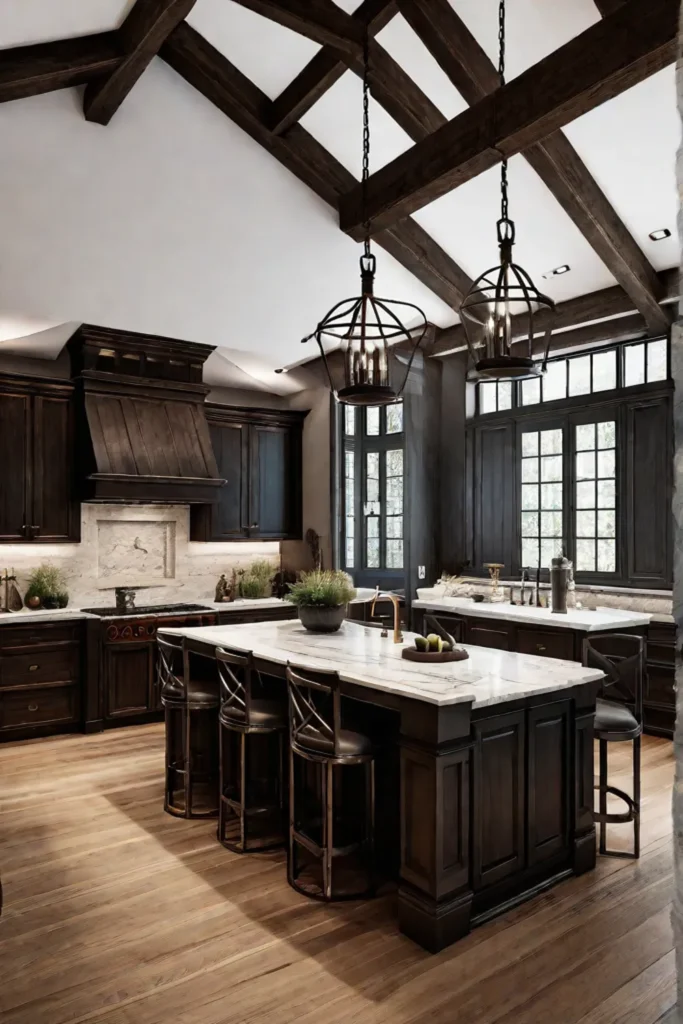
When selecting the color temperature and brightness levels for your ambient lighting, consider your kitchen’s overall style and aesthetic. Warmer tones (2700K-3000K) can create a cozy, inviting atmosphere, while cooler tones (4000K-5000K) lend a more modern, industrial vibe.
Natural Light
Remember the power of natural light! Harnessing the sun’s rays can enhance your kitchen’s overall ambiance and functionality while providing energy-saving benefits.
The strategic placement of windows and skylights can maximize the natural light that enters your kitchen. Using light-colored finishes and sheer window treatments, you can help reflect and distribute that natural light throughout the space, creating a bright, airy atmosphere.
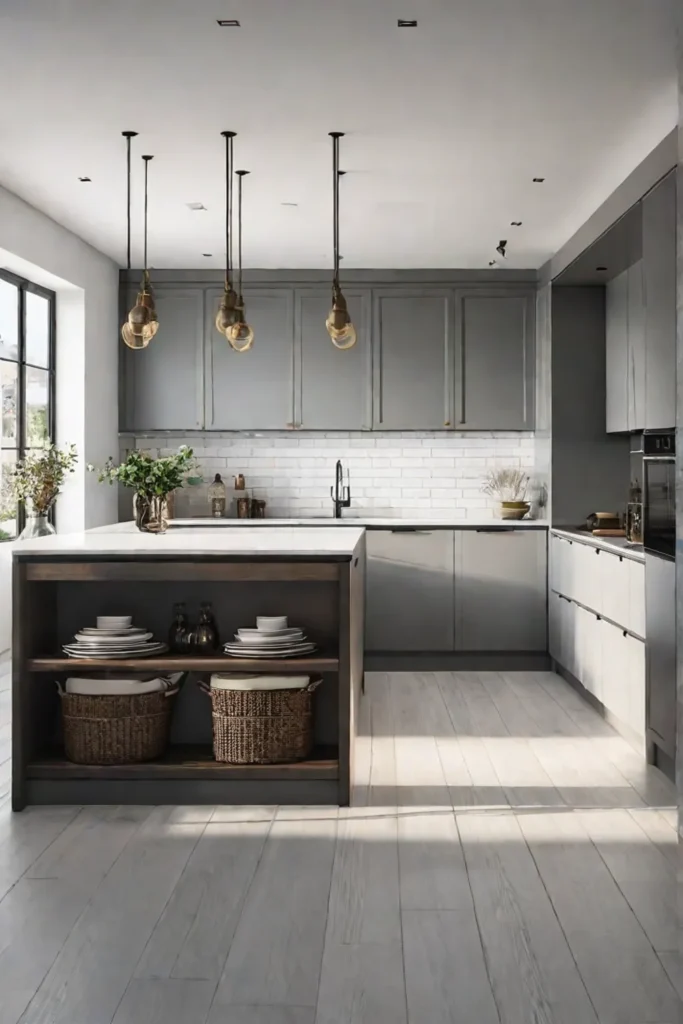
Combining natural light with artificial lighting sources, such as recessed and task lighting, can create a well-balanced and visually stunning kitchen. Just be sure to consider the orientation of your windows and the time of day to ensure you’re getting the most out of that natural illumination.
Statement Fixtures
Sometimes, a kitchen needs something extra to make it truly shine. That’s where statement lighting fixtures come in. These eye-catching, unique pieces can serve as the focal point of your kitchen, adding a touch of personality and style to the space.
Whether it’s an oversized pendant light, a sculptural chandelier, or a geometric-patterned fixture, a statement lighting piece can instantly elevate the overall aesthetic of your kitchen. When choosing a statement fixture, consider the overall design of your kitchen and select a piece that complements the existing style and color scheme.
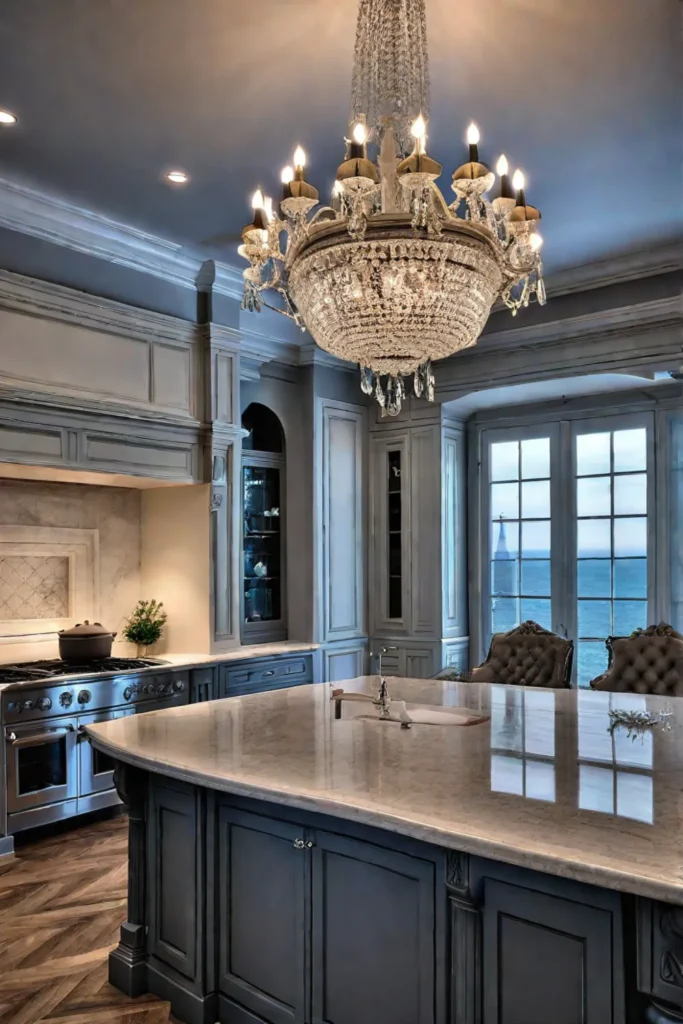
Positioning is key when it comes to statement lighting. Make sure the fixture is properly scaled for the size of your kitchen and placed in a way that draws the eye and creates a visually striking centerpiece. Don’t be afraid to layer your statement fixture with other lighting sources, such as recessed lights or under-cabinet lighting, to create a cohesive and visually appealing scheme.
Layering Lighting
The true magic happens when you layer different types of lighting in your kitchen. Combining task, ambient, and accent lighting allows you to create a visually stunning and functionally efficient space that meets all your needs.
Task lighting, such as under-cabinet lights or pendant fixtures over a kitchen island, provides the focused illumination needed for specific work areas. Ambient lighting, like recessed lights or wall sconces, sets the overall mood and atmosphere. Accent lighting, such as track lighting or LED strips, can highlight architectural features or showcase your kitchen’s design elements.

When layering your lighting, it’s important to strike the right balance. Too much of one type of lighting can make the space feel unbalanced or uncomfortable. Instead, consider your kitchen’s unique layout and design and carefully position each lighting source to blend function and aesthetic appeal perfectly.
Conclusion
In conclusion, the key to creating a well-lit and visually captivating kitchen is the strategic use of various lighting elements. By incorporating pendant lights, recessed lighting, under-cabinet lighting, task lighting, ambient lighting, natural light, and statement fixtures, you can transform your culinary haven into a functional and aesthetically pleasing space.
Remember to consider your kitchen’s unique layout and design when selecting and positioning your lighting sources. Don’t be afraid to experiment with different styles and layers of lighting to find the perfect balance that suits your personal taste and cooking needs.

With these eight illuminating kitchen lighting ideas, you’re well on your way to creating a truly shining kitchen that inspires your culinary creativity and provides a warm, inviting atmosphere for you and your loved ones to gather and enjoy.
So, what are you waiting for? Start planning your kitchen lighting transformation today, and get ready to bask in the glow of your newly illuminated culinary haven!
